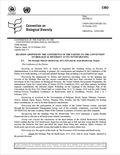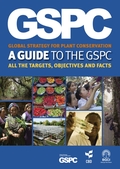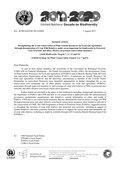The Convention on Biological Diversity (CBD) (CBD 1992), the International Treaty on Plant Genetic Resources for Food and Agriculture (ITPGRFA 2001), the Second Global Plan of Action for the Conservation and Sustainable Utilization of PGRFA (FAO 2011), and the Global Strategy for Plant Conservation (GSPC) each stress the need to develop and implement national strategies for PGRFA conservation and sustainable use. They also underline the fundamental role of governments to ensure that the conservation and sustainable use of PGRFA continues to be a key element in global efforts to increase food security and nutrition, and to alleviate poverty.
Global Plan of Action provides a “framework, guide and catalyst for action at community, national, regional and international levels” and “seeks to create an efficient system for the conservation and sustainable use of plant genetic resources, through better cooperation, coordination and planning and through the strengthening of capacities”.
Decision X/2 of the COP 10 (CBD Strategic Plan for Biodiversity 2011–2020) (Nagoya, Japan, October 2010) (CBD 2010b) recognized “the genetic diversity of cultivated plants and farmed and domesticated animals and of wild relatives, including other socio-economically as well as culturally valuable species” as important elements of biodiversity to maintain, “and [by 2020] strategies have been developed and implemented for minimizing genetic erosion and safeguarding their genetic diversity”.
Aichi Target 13 of the CBD Strategic Plan for Biodiversity 2011–2020 (CBD 2010b) highlights more effective CWR conservation as a specific priority, stating that “by 2020, the loss of genetic diversity of cultivated plants and domestic farm animals in agricultural ecosystems and of wild relatives is halted and strategies have been developed and implemented for safeguarding the genetic diversity of other priority socio-economically valuable species as well as selected wild species of plants and animals”.
The conservation of CWR at national level should be linked to the implementation of the Global Strategy for Plant Conservation (GSPC) (through the GSPC national focal point), the International Treaty for Plant Genetic Resources for Food and Agriculture (ITPGRFA) as well national instruments related to the conservation of biodiversity such as the National Biodiversity Strategies and Action Plans (NBSAPs)―the principal instruments for implementing the CBD at national level―and National Plant Conservation Strategies, where appropriate.
The Interactive Toolkit for Crop Wild Relative Conservation Planning was developed within the framework of the SADC CWR project www.cropwildrelatives.org/sadc-cwr-project (2014-2016),
which was co-funded by the European Union and implemented through ACP-EU Co-operation Programme in Science and Technology (S&T II) by the African, Caribbean and Pacific (ACP) Group of States.
Grant agreement no FED/2013/330-210.









